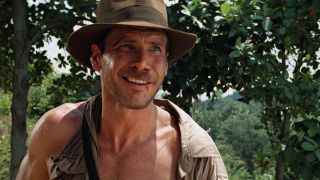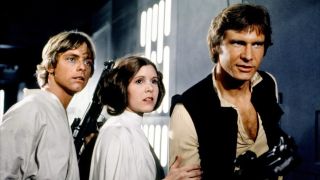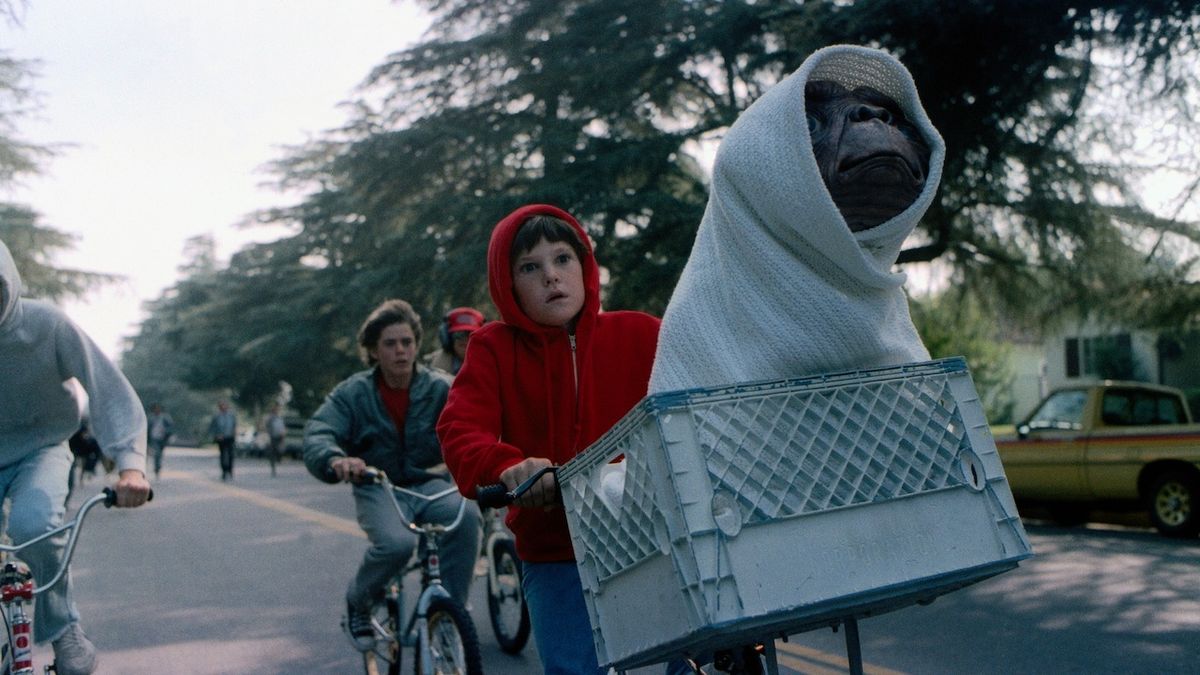
"Phooooooooone home". For any child of the ’80s it was a rite of passage to imitate the reassuringly friendly nasal-growl of ET in the school playground. This, after all, was a pop culture phenomenon. An oddball alien who encouraged his own line of action figures, clothing, and video games.
En route to such success, ET managed to break box office records across the world – and, after the double-whammy of this and Raiders of the Lost Ark, the little guy secured Steven Spielberg’s reputation as the most commercially proficient filmmaker of all time.
Yes, this big-headed, bug-eyed otherworldly native somehow captured the hearts of just about everyone who saw it – an emotionally manipulative, but nonetheless beautifully executed, slice of tear-jerking cinema. Indeed, it was almost impossible not to be captivated by this deceptively slight tale of a little alien who takes refuge in the home of a middle class, single parent, suburban family and bonds with a ten-year-old called Elliot.
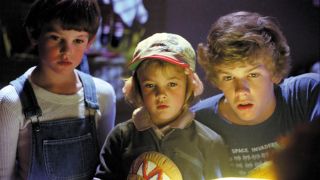
Even imagining the most magical moments from the movie may instigate goose bumps among a certain generation, from Elliot and pals riding their bicycles into the sky to the sombre sight of ET struggling for life and captured by a group of government agents. For Spielberg’s ultimate slice of screen fantasy a daring casting decision was made: no “name” actors would appear in the film in case they distracted from the sight of ET himself.
Hence, with the plastic-fantastic extraterrestrial as the central focus of the feature, a number of young and old thespians were brought in to audition for the main roles. Of course, ET would introduce the world to future superstar Drew Barrymore, who plays Elliot’s annoyingly cute little sister Gertie. Given the part of Elliot himself was a young unknown called Henry Thomas. Cast as Mary, the mother of three, was Dee Wallace – an idiosyncratic choice given that the actress’s previous credits were far removed from Spielbergian family fare.
"It was probably the greatest family film that Disney never made"
Dee Wallace
“I was bouncing all over the place at that time,” laughs Wallace when our sister publication SFX magazine catches up with her at an anniversary screening of ET at the annual Sitges Film Festival. “I started my career as an actress very late in the day. I didn’t go to New York and perform in theatre until I was 27 – and that was considered the way to get your break back then."
"However, thankfully, in little over five years I was working in TV. Then I did a religious movie called All the King’s Horses and I had a diamond of a part in the great Blake Edwards’ sex comedy 10. But my first leading role was in Wes Craven’s The Hills Have Eyes. I got killed by a group of cannibals in that one [laughs]. And then I did the Joe Dante horror movie The Howling. So I was becoming known as a ‘scream queen’ but, to my surprise, I ending up auditioning for ET.”
Sign up to the SFX Newsletter
Get sneak previews, exclusive competitions and details of special events each month!
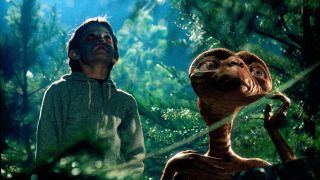
Indeed, despite being a fixture of grind-house gore-fests, Wallace was now thrown into an altogether more whimsical world. In her role as Mary, the actress gives a career-defining performance – aptly mediating the life of an overworked mother who cares for her children but never has time to raise them. In fact, so believable is Wallace’s turn that it’s a surprise to hear she didn’t have any offspring of her own at home...
“I was not a mother at the time of doing ET,” reveals the actress. “So I drew on my own mother who was actually very close to the character of Mary. She was always in a hurry – she worked all the time, worked very, very hard. I grew up in a very poor household and my father was not around a lot because he was an alcoholic. So Mary was someone that I felt I could relate to."
"Right from the start I believed I could bring something personal to the role. But, to be honest, I actually think playing a mother is one of the easiest things an actress can do. I mean, look, if you have a dog then you are a mother [laughs]. Being a mother is all about unconditional love and protection. I think raising a pet requires motherly qualities.”
Perfect cast
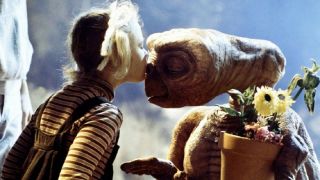
Wallace also maintains that working with the likes of Barrymore and Thomas was far from a struggle, putting a lie to the old adage “an actor should never work with animals or children... I wouldn’t have had a career if I didn’t work with children or animals,” she smiles.
“I loved working with the kids in ET – Henry Thomas was really committed to that role, even at such a young age, and Drew Barrymore was adorable. The great thing about working with children is that they don’t plan a lot of things out. So it can be quite spontaneous. They are always in the moment, which is also very helpful, but you never know how a scene is going to go. I like to work like that anyway so shooting ET was just a dream.”
Naturally, ET himself had to stand out. Called in to create the interplanetary critter was Italian make-up effects whiz Carlo Rambaldi, who had worked with the likes of Dario Argento in his home country before being pinched by Hollywood and obtaining an Academy Award for his achievements on Alien.
Perhaps most important to his ET job, however, was his craftsmanship on Spielberg’s previous Close Encounters of the Third Kind, for which Rambaldi had assisted in the realisation of the space-visitor finale. Although Rambaldi would only fleetingly work after ET, his death in August 2012 served to remind the general public of his most famous accomplishment.
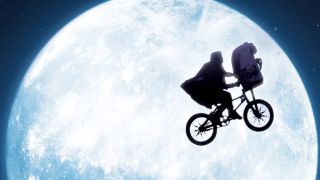
“Carlo was a beautiful man and I was so sad to hear about his passing,” states Wallace. “I mean, my god, he made the quintessential creature, didn’t he? He made a being that seemed to have complete consciousness. You really did feel like you could communicate with that alien. It was so beautifully done. Of course, it was all latex and puppetry but you totally believed in him – and I don’t just mean on the screen. When I was working with ET I would, just occasionally, become convinced that this thing was real [laughs]. It was magical how he brought him to life. I was so happy when he won another Oscar for ET – it was well deserved.”
ET captured the imagination of almost everyone who went to see it. Held back from video release (a rarity in those days), the film which had knocked Star Wars off the “top grossing movie of all time” spot soon became the most pirated VHS cassette in history. It brought Princess Diana to tears and won Spielberg the UN Peace Medal. It even managed, reputedly, to move then-American President Ronald Reagan.
Indeed, to this day, ET continues to surface on lists of the “best films ever made” even if, when the Oscars came around, the movie would lose to Richard Attenborough’s epic biopic Gandhi in both the Best Picture and Best Director categories.
“I think it still touches us because, at its most basic level, ET is the way that we want to be and the way that we want the world to be,” enthuses Wallace. “I believe that there is a real human truth in that film. As human beings, we are hungry for our hearts to open – we always want to feel connected to, and empathetic with, each other."
"We want to feel and believe that things can be better. ET told us that aliens are not here to destroy us and that can be interpreted in other ways – namely that, in reality, nobody is here to destroy us – the vast majority of us just want to live in peace. To accomplish that we have to keep our hearts open – and that was the message of Steven’s film. When you think about it, ET was the Wizard of Oz for the 1980s. They both had similar messages about self-confidence and believing in your fellow human beings to do the right thing.”
The disappearing guns
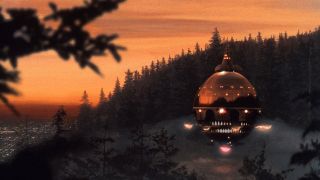
In 2002, to celebrate the film’s 20th anniversary, Spielberg unleashed a controversial new cut of ET, which included additional CGI-effects à la the original Star Wars trilogy, and a frankly baffling scene (later spoofed in the “Free Hat” episode of South Park) in which the police force’s guns have been digitally replaced by walkie- talkies. Although Spielberg would later admit that his decision was not necessarily the wisest of choices (affirming to his fans that he’d never again add CGI to any of his past work), Wallace is quick to spring to the director’s defence.
"The purists were always going to be judgemental,” she claims. “But I think you need to contextualise the 20th anniversary edition. This was just after 9-11 and everybody was trying to be ultra responsible and not focus on terrorism and acts of violence. I think Steven, as he was a father himself by then, was especially conscious of that. It was his way of saying ‘I want to protect my children’.
"I think having the police poised with guns – as a group of children are going by in their bicycles... you know, I understand why he removed that. Of course, it’s not as if he erased the original ET from the face of the earth – it’s still out there and it’s now on Blu-ray. You have a choice as regards which version you want to watch.”
Surprisingly, though, one thing that ET never spawned was a sequel. Questioned about this Wallace admits that maybe – just maybe – some things should be left as they are. “ET never belonged to anyone else except Melissa Mathison, who wrote the script, and Steven,” she affirms. “And I cannot imagine them wanting to follow that story up. It’s just perfect the way it is. What else can I say? It was probably the greatest family film that Disney never made.”
This story originally appeared in SFX magazine. For more great sci-fi, fantasy, and horror coverage, pick up a copy or subscribe so you never miss an issue.
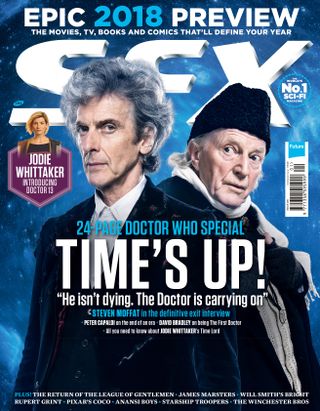
SFX Magazine is the world's number one sci-fi, fantasy, and horror magazine published by Future PLC. Established in 1995, SFX Magazine prides itself on writing for its fans, welcoming geeks, collectors, and aficionados into its readership for over 25 years. Covering films, TV shows, books, comics, games, merch, and more, SFX Magazine is published every month. If you love it, chances are we do too and you'll find it in SFX.
Most Popular



